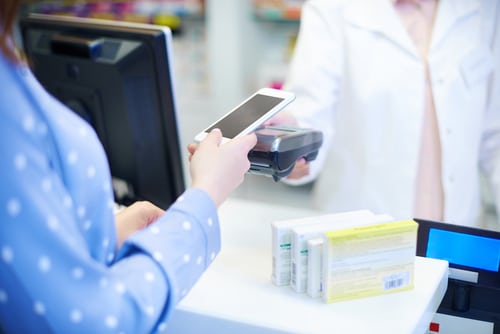
A Preview of What Your Storefront Might Look Like in 2030
By 2030, technology will revolutionize the way consumers shop. You’ll be able to shop from any room of your connected home by using your voice, touchscreens on home surfaces, gestures or even simply moving your eyes. Online purchases will be delivered to your home by self-driving trucks. You’ll travel to stores in self-driving cars. And your purchase will be assisted by artificial intelligence.
How will these innovations change the nature of the storefront? Here’s a look at four ways technology will transform the way consumers shop over the next decade.
Online Shopping Will Transform In-Store Experience
By 2020, e-commerce growth will surpass the growth of brick-and-mortar sales, eMarketer projects. For some retailers, this will mean shifting to an online-only retail model that eliminates the cost of maintaining a local storefront. For other retailers, this will mean integrating consumers’ online and in-store experience.
Consumers approach the shopping experience as an integrated experience already, with 46 percent researching products in local stores before buying them online, while 69 percent research products online before buying them in-store, according to a Harris poll. Brick-and-mortar businesses are taking advantage of this by empowering their apps and in-store customer service to assist customers with comparative shopping, and then offering incentives to encourage customers to buy in-store. Walmart’s Savings Catcher app, which refunds consumers the difference between in-store purchases and prices of online competitors, signals this trend.
Artificial intelligence (AI) is also narrowing the gap between online and in-store shopping. AI enables in-store representatives to draw from consumers’ purchase history and online profiles to provide them with relevant shopping recommendations. While this task is currently supported heavily by humans, it will increasingly become automated by apps and robots, with McKinsey estimating that 53 percent of retail sales representatives’ tasks are automatable.
In-store Experiences Will Become More Engaging
As in-store shopping becomes more automated, the in-store experience will become more engaging. One example of this is the increasing use of interactive mirrors at retailers such as Ralph Lauren and Neiman Marcus, Fast Company reports. Interactive mirrors can help shoppers analyze their face or body type and make customized beauty or fashion recommendations. Other retailers are using virtual reality tools such as Vroom, which enables car buyers to take a virtual test drive of vehicles.
Another major trend in in-store engagement is adding entertainment to the shopping experience, according to a Synchrony report. Taking a cue from Barnes & Noble’s partnership with Starbucks, stores are now adding entertainment elements such as coffee shops, bars and music to the shopping experience.
Digital Payments Will Dominate
In-store purchases will be predominantly digital by 2030. GE projects that three methods of payment will characterize future transactions. Mobile payments, already gaining momentum through smartphone mobile wallets, will expand to include wearable devices such as smartwatches.
Another method of payment that will gain popularity is digital currencies such as bitcoin, which can be exchanged for other currencies. One-third of high-income consumers are projected to pay with digital currency by 2020.
A third method of digital payment that will become popular is biometric payments. These will rely on in-house cameras and sensors to verify payer identity through biometric markers such as face and voice recognition.
Security Will Be Integrated With Sales
The role of security cameras in biometric payments illustrates how security will become integrated with sales in future stores. High-tech security surveillance cameras are increasingly becoming multi-purpose tools that support the sales process in addition to supporting security functions.
Finally, another example of this is the use of security cameras to collect buyer analytics information. Security cameras can be used to study where shoppers walk in your store, which displays they frequent and how service representatives interact with them, which can be used to optimize your sales and customer service. Over two-thirds of stores are now using security cameras for purposes such as improving sales and customer service and studying buyer behavior, according to an Eagle Eye Networks report.
Photo Credit: Image provided by Social Monsters with permission to use.














